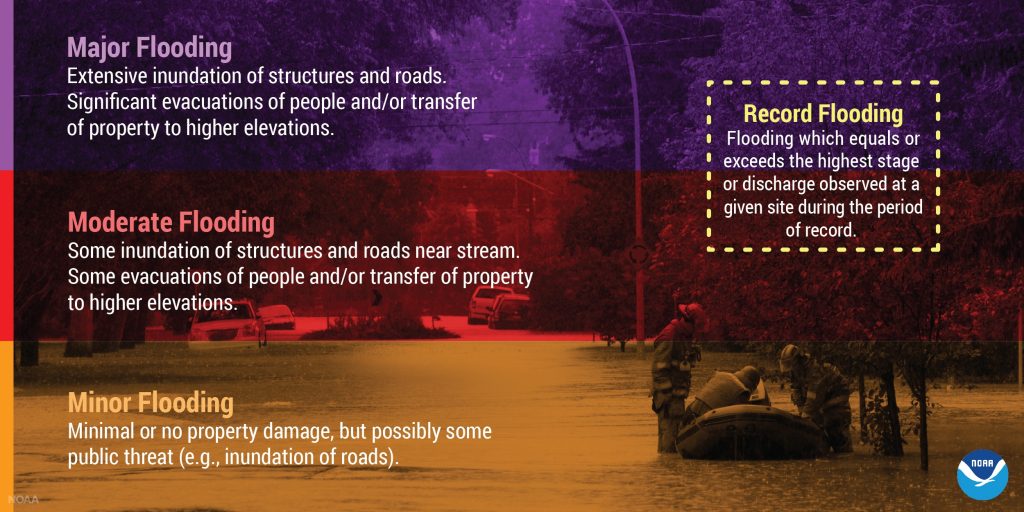Vast areas of the United States are at risk of severe flooding this spring, even as Nebraska and other Midwestern states are already reeling from record-breaking late-winter floods that have killed at least 3 people and caused an estimated $3 billion in damages. According to the National Oceanic and Atmospheric Administration, upwards of 200 million people are at risk.
“The extensive flooding we’ve seen in the past two weeks will continue through May and become more dire and may be exacerbated in the coming weeks as the water flows downstream,” said Ed Clark, director of NOAA’s National Water Center in Tuscaloosa, Alabama. “This is shaping up to be a potentially unprecedented flood season, with more than 200 million people at risk for flooding in their communities.”
The flood risk outlook is based on a number of factors, including current conditions of snowpack, drought, soil moisture, frost depth, streamflow and precipitation. Local heavy rainfall, especially associated with thunderstorms, can occur throughout the spring and lead to flooding even in areas where overall risk is considered low. In the western U.S., snowpacks at higher elevations may continue to build over the next month, and the flood risk will depend on future precipitation and temperatures.
Spring Outlook for Temperature, Precipitation and Drought
Above-average rain and snow in California this winter has pulled the entire state out of its seven-year drought. Scattered areas of the Southwest, Southeast and Pacific Northwest are abnormally dry, but the worst drought conditions in the U.S. are in northern New Mexico. Springtime rain and melting of deep snowpack are favored to slightly improve the drought there. Drought will persist through spring in southern Alaska and Oregon, and may develop in Hawaii.
Above-average precipitation is favored from the Central Great Basin to the East Coast and in Alaska, compounding the flood risk for many states, especially in the Central and Northern Rockies and in the Southeast.
Warmer-than-average temperatures are forecast to extend from the Pacific Northwest to the Central Rockies, and from southern Texas, northward through the Great Lakes and eastward to encompass the entire East Coast. The greatest chance for above-average temperatures exist in Alaska, the Northeast and mid-Atlantic. The interior of the U.S. from the Dakotas southward to northern Texas are favored to have below-average temperatures this spring.
“Severe weather and flooding can strike anywhere, whether or not you are in a high risk area,” said Daniel Kaniewski, Ph.D., deputy administrator, Federal Emergency Management Agency. “Insurance is the first and best line of defense. Act now to make sure you have the right coverage for a flood by visiting floodsmart.gov, and don’t forget to download the FEMA mobile app to get real time weather alerts in your area.”
NOAA produces seasonal outlooks to help communities prepare for weather and environmental conditions that are likely during the coming months. Heavy rainfall at any time can lead to flooding, even in areas where overall risk is considered low. The latest information for a specific area, including official watches and warnings are available at http://water.weather.gov. Empowering people with information to prepare and take action is key to NOAA’s effort to build a Weather-Ready Nation.
JUST IN:: @NOAA #SpringOutlook 2019: Historic, widespread #flooding to continue through May. Access our images & video at https://t.co/h0FHkKJavk @NWS #Spring pic.twitter.com/fZruKfQ8nR
— NOAA Communications (@NOAAComms) March 21, 2019
Source: NOAA

